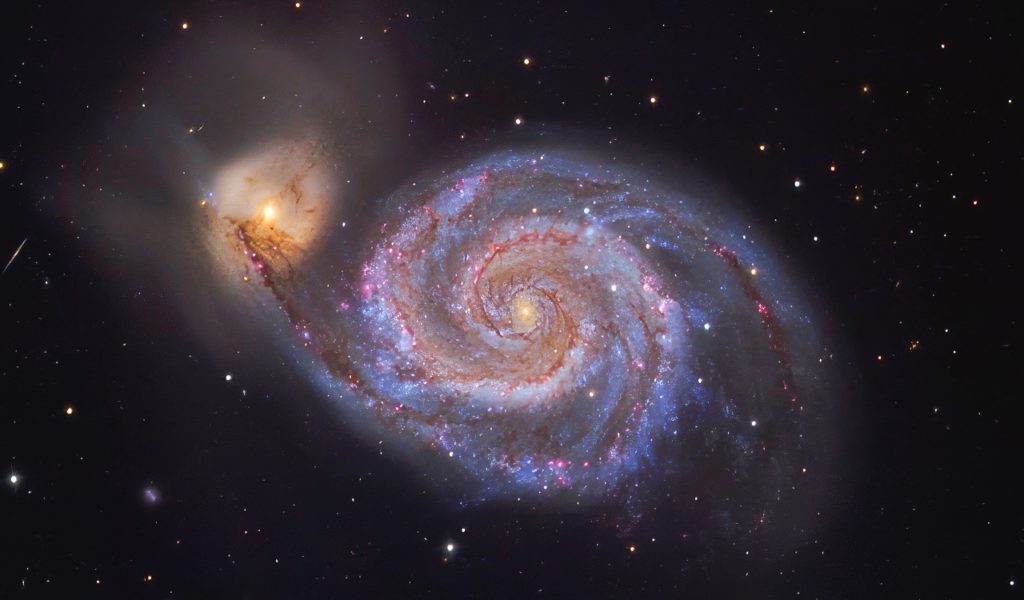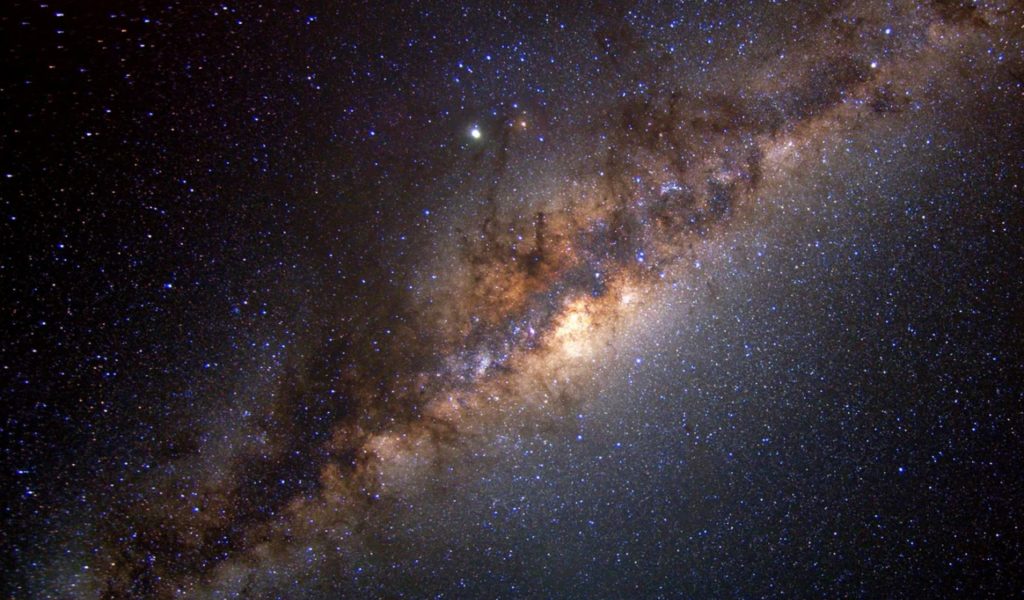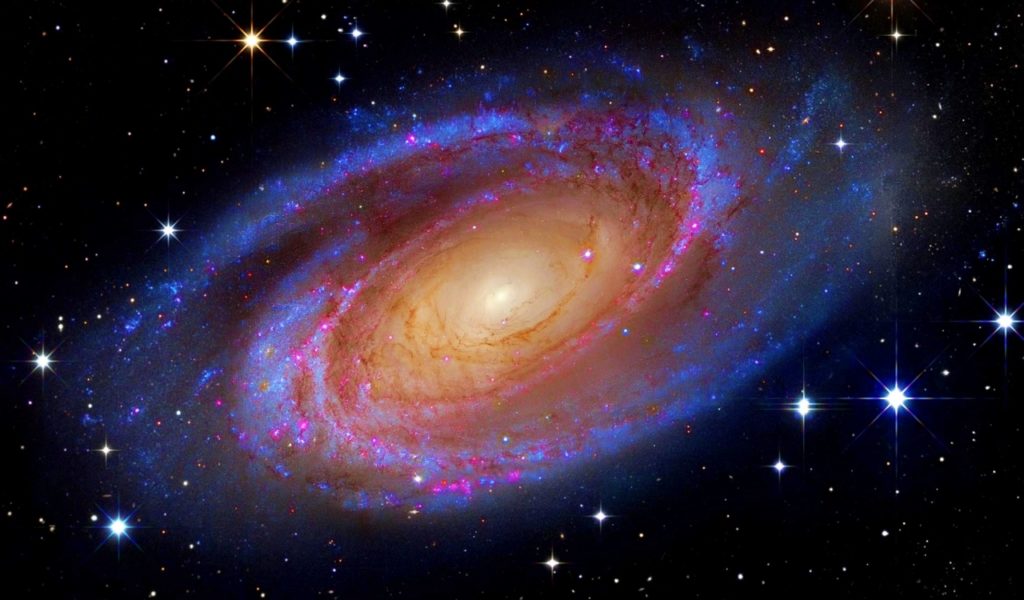The Milky Way Galaxy is home to billions of stars and even major star systems with their own solar system and planets. We are also part of this Galaxy too, and while there are other galaxies similar to the Milky Way, they all end up looking quite different.
At least, that was until recently when the now infamous James Webb Telescope seems to have found a galaxy that could be our galaxy’s twin. Of course, it is not its actual twin as it appears to be a lot older.
Known as a “sparkling cannibal galaxy,” the telescope managed to see this distant sparkler galaxy due to its impressive technology. Specifically its incredible deep-field tech. This galaxy is located around 9 billion lightyears from Earth.
Scientists are very excited about this discovery. To have an older galaxy to look at is always fun. However, finding one that looks almost exactly like our own is helpful as it can answer a lot of questions about the Milky Way. The most important one being for scientists, well, how our galaxy took shape.
Galactic Cannibalism

The galaxy has been given the name “Sparklet” due to the dwarf galaxies and two doze globular clusters that shine around it. According to those that have studied the galaxy, it’s apparently dining upon the nearby objects and growing larger as a result.
As referenced, this is a cannibal galaxy. These are galaxies that do exactly as one might assume. Usually using tidal gravitational interactions with nearby objects, the larger galaxy will begin to merge. This can seem like the bigger galaxy is feeding on the smaller one, because…it kind of is.
While galaxies do not “feed” like Marvel’s Galactus or something, their gravity allows them to pull in smaller stars and galaxies that come near them. What might also shock some people is that the Milky Way is said to have been a cannibalistic galaxy in its earlier days.
This just goes to show how twin-like Sparkler is to the Milky Way. Of course, Sparkler’s feeding frenzy was actually captured by Webb’s First Deep Field images. These are, by far, the deepest images we’ve ever seen of our universe and some of the most detailed images ever taken. Sparkler was the very first color image. All of which were released back in July 2022.
Analysis Of The Galaxy

The initial Webb images showed us a galaxy as a warped orange line, surrounded by spots of light. Yet more analysis has been done since then, revealing that the galaxy is growing by cannibalizing its neighbors.
The lead author of this study, Duncan Forbes, is a Professor of Astrophysics at the Swinburne University of Technology, Australia. He claimed regarding the findings:
“We appear to be witnessing, first hand, the assembly of this galaxy as it builds up its mass—in the form of a dwarf galaxy and several globular clusters. We are excited by this unique opportunity to study both the formation of globular clusters and an infant Milky Way, at a time when the universe was only one-third of its present age.”
Located in the Volans Constellation, one should keep in mind that this galaxy is 9 billion lightyears from us. Of course, that means we’re seeing light that is 9 billion years old from this galaxy. Therefore, we are not seeing it in its present day but rather, in its distant past.
The James Webb Telescope was able to see it after the space-time warping gravitational pull of the galaxy cluster, known as SMACS 0723, acted as a massive lens to actually steer it into focus for the telescope.
We’re literally seeing a galaxy formed only 4 billion years after the Big Bang. At this point in the universe’s incredibly ancient history, Sparkler was only 3% of the Milky Way’s mass. However, in the present day, scientists believe this is now a gigantic galaxy that stuffed itself so much that it could be the same size as the Milky Way.
Milky Way Twin

The scientists studying the galaxy see a lot of resemblance between Sparkler and the Milky Way galaxies. When analyzing globular clusters surrounding Sparkler, they found star swarms resemble younger versions of the 200 or so globular clusters you can see around the Milky Way.
Sparkler’s active consumption of its nearby dwarf galaxies also connects it to our Milky Way. As referenced, Milky Way also cannibalized nearby objects when growing. We can see this in the remnant trails of stars and clusters from galaxies it shredded through, outside its galactic disc.
While unsure how stars came to clump into globular clusters, scientists feel Sparkler still offers a major glimpse of the Miky Way’s incredible past. Co-author of the study, Aaron Romanowsky, Professor of Astronomy at San Jose State University, said:
“The origin of globular clusters is a long-standing mystery, and we are thrilled that JWST can look back in time to see them in their youth.”
With its connection to the Milky Way now pretty important to scientists, the plan is for researchers to use deeper imaging to spot more clusters around Sparkler. The goal would be to learn even more about how both these galaxies came to be.